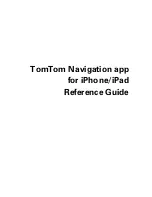
302
Copyright © Acronis, Inc., 2000-2010
View details of the machine
(group).
Click
View details
.
In the Machine details (p. 309)/Group details (p. 318) window, examine all
information on the selected machine (or the selected group).
View tasks of the machine
(group).
Click
View tasks
.
The Tasks (p. 328) view will display a list of the tasks, pre-filtered by the selected
machine (group).
View log of the machine
(group)
Click
View log
.
The Log (p. 330) view will display a list of the log entries, pre-filtered by the
selected machine (group).
Revoke policy from the
machine (group).
Click
Revoke
.
The management server will revoke the policy from the selected machine or
group of machines. The policy itself remains on the management server.
7.1.3
Physical machines
Acronis Backup & Recovery 10 lets the administrator protect data and perform management
operations on multiple machines. The administrator adds a machine to the management server using
the machine's name or IP address, imports machines from Active Directory, or from text files. Once a
machine is registered (p. 408) on the management server, it becomes available for grouping, applying
backup policies and monitoring the activities related to data protection.
To estimate whether the data is successfully protected on a managed machine, the management
server administrator checks its status. A machine's status is defined as the most severe status of all
backup plans (p. 186) (both local and centralized) existing on the machine and all backup policies (p.
298) applied to the machine. It can be "OK", "Warnings" or "Errors".
Groups
The management server administrator has the ability to group machines. A machine can be a
member of more than one group. One or more nested groups can be created inside any group
created by the administrator.
Grouping helps organize data protection by the company departments, by the Active Directory
domains or organizational units within a domain, by various populations of users, by the site
locations, etc.
The main goal of grouping is protection of multiple machines with one policy. Once a machine
appears in a group, the policy applied to the group is applied to the machine and the new tasks are
created by the policy on the machine. Once a machine is removed from a group, the policy applied
to the group will be revoked from the machine and the tasks created by the policy will be removed.
Built-in group
- a group that always exists on a management server. The group cannot be deleted or
renamed. A built-in group cannot include nested groups. A backup policy can be applied to a built-in
group. The example of a built-in group is the
All physical machines
group, that contains all the
machines registered on the management server.
Custom groups
- groups created manually by the management server administrator.
Static groups
















































